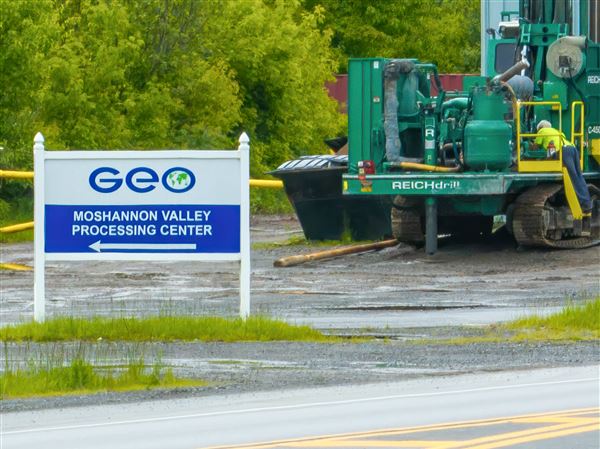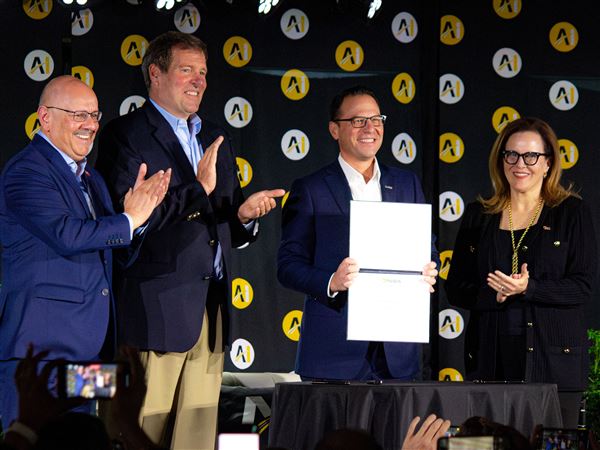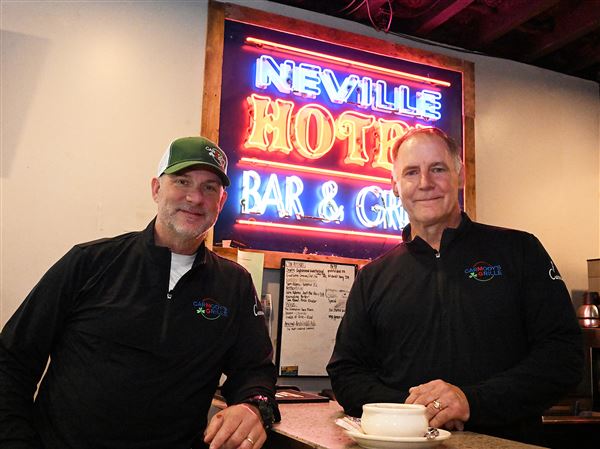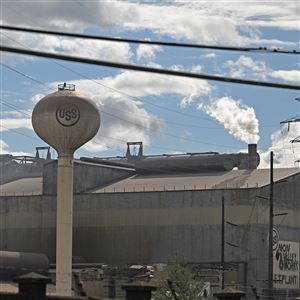The recent boom in passenger and freight traffic, spurred as so many things are by the soaring price of diesel fuel and gasoline, makes me happy. I love trains.
My boyhood home was across the street from a Long Island Rail Road line. When cousins visited from out of state, they could never figure out how the O'Neills could sleep through the trains either roaring or rattling past, but they were lullabies to us.
And eight years ago, when I was taking a paternity leave after the birth of our second child, there seemed to be a long freight train going through West Park every time our stroller approached. Dot.com stocks were all the rage at the time, but I thought I'd let everyone else invest in 21st-century stock. I'd go with the 19th century.
I bought 100 shares of Norfolk Southern stock in February 2000. Through steady reinvestment of dividends, I now own 115 of its 379 million shares. That may not make me a magnate, but the value of my investment has more than quadrupled. It's nothing to walk through that park now and see as many as 50 UPS cars on a train because so many tractor-trailers have gotten off the roads.
Dotcom that.
I put that out in the interests of full disclosure because America needs to do what I did. We need to invest in more 19th-century technology as the age of cheap gasoline fades in the rear-view mirror. We need more rail capacity.
I'm back on this topic, and not for the last time, because of a little factoid I can't get out of my head: The only train from Pittsburgh to Cleveland leaves here at midnight and arrives there at 2 a.m.
If local leaders are serious about building a "Tech Belt'' to connect the high-tech research and work forces of these two regions, a little medium-tech railroad help would be a great start.
That idea doesn't originate with me. A couple of weeks ago, I wrote a column that touched on the national ridership of Amtrak trains rising for the sixth straight year despite the infrequent runs, and Pittsburgh City Controller Mike Lamb shared a letter he'd written to Amtrak President Alex Kummant.
Pittsburgh's location between Chicago and the East Coast megalopolis makes it vital to the rail network, Lamb wrote, but that Cleveland train (which goes on to Chicago) is "a terrible option.'' He wanted to know what we can do out here to mimic the success Amtrak has had increasing ridership between Harrisburg and Philadelphia.
A few years ago, PennDOT and Amtrak went halfsies on a $145 million project to put high-speed electric train service between the state capital and Philly. There are now 14 daily departures Monday through Friday, and express trains reaching speeds up to 110 mph have turned the old two-hour trip into a 90-minute one. The Harrisburg station, which had 317,000 people board or get off in 2004, had almost 465,000 last year. Ridership on the Keystone Corridor is up another 19 percent this year.
Pittsburgh has only three Amtrak trains a day -- one to Chicago, one to Philadelphia-New York, and one to Washington, D.C. So there were just 120,000 boardings or exits here last year. Norfolk Southern owns the line between Pittsburgh and Harrisburg and its freight has the right of way, which makes Amtrak delays common.
Even with all those disadvantages, the trains frequently sell out. Ridership on The Pennsylvanian, our only train to Philadelphia, is up almost 13 percent over last year. The Capitol Limited, which runs through here between Washington and Chicago, is up more than 12 percent.
Lamb finds himself envying what Ohio has done. It doesn't yet have good Amtrak service but its Ohio Rail Development Commission has a grand plan to make Cleveland the hub of a rail network reaching five states.
"We're better situated than they are,'' Lamb says. "Cleveland can't go north; they've got the lake in the way. I hate to see Cleveland ahead of us on anything.''
U.S. Rep Jason Altmire, D-McCandless, recently secured a $500,000 federal grant to establish commuter rail from New Kensington to Pittsburgh. Its goal is to show there will be ridership enough to justify spending $140 million -- in federal, state and perhaps private money -- to put trains on existing track and relieve traffic on Route 28 by giving commuters a rail option on the opposite bank of the river.
Altmire, who serves on the House Transportation Committee, is working with U.S. Rep Tim Ryan, an Ohio Democrat on the Appropriations Committee, to get the Cleveland-Pittsburgh corridor targeted for high-speed rail.
"I feel very good about our chances,'' Altmire said yesterday.
It's way too early to say "all aboard," but the train is headed in the right direction.
First Published: July 22, 2008, 4:00 a.m.















